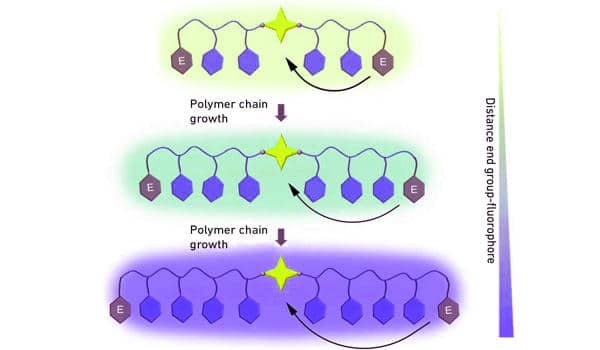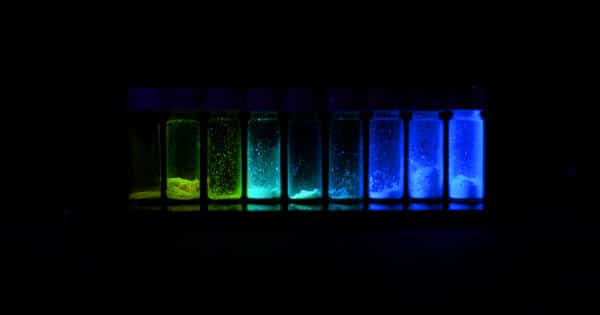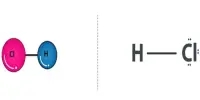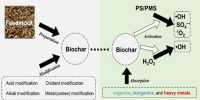A significant amount of research and development work is currently being done around the world on carbon-containing, or organic, molecules that emit colored light after appropriate excitation. The display industry and the advancement of biomedical imaging techniques are driving this research field. While precise color tuning in organic fluorescent dyes has traditionally been accomplished by combining different molecules, ETH researchers have now developed a method that can generate a diverse palette of colors through chemical changes within the molecules themselves.
Tuning the emission color of molecular fluorophores is of fundamental interest because it directly reflects excited state manipulation at the quantum mechanical level. Despite recent advances in molecular design and engineering on single fluorophores, a systematic methodology for obtaining multicolor emission in aggregated or solid states with practical implications is lacking.
Researchers have developed fluorescent polymers whose color can be easily tuned. Depending on their length, the polymers emit a different color. Potential applications include biomedicine, security printing and solar energy.
For this work, Yinyin Bao, a group leader in the group of ETH professor Jean-Christophe Leroux, and his team of scientists used fluorescent organic polymers. These polymers are best described as moving chains of varying lengths. “The chains are symmetrical, and two components within them contribute to the fluorescence,” Bao says. “One component, known as the fluorophore, is located in the middle of the chain, while the other occurs once at each of the chain’s two ends.”
Scientists can change the number and structure of the links that connect the fluorophore in the middle of the chain to each end of the chain. If the polymer chain is bent so that one of its ends is close to the fluorophore and the chain is simultaneously exposed to UV light, it fluoresces.

Distance affects the interaction
The researchers have now demonstrated that the fluorescence color is determined not only by the structure of the chain links and ends, but also by the number of chain links. “The interaction of the chain end and the fluorophore is responsible for the fluorescence of these polymers,” Bao explains, adding that “the distance between the two components affects how they interact and thus the color that’s emitted.”
The researchers can control the number of chain links by using a technique known as living polymerisation. First, they build the chain slowly by attaching building blocks to the fluorophore. When the desired length is reached, the scientists can stop the process and generate the chain end molecule at the same time. The researchers used this method to create polymers with different colors: with fewer than 18 building blocks, the molecules fluoresce yellow; with 25 chain links, green; and with 44 or more links, blue. What makes this unique is that these variously luminescent polymers are all made up of the same components. The only difference is the chain length,” Bao says.
Wide colour range OLEDs
The research team, which included scientists from ETH Professor Chih-Jen Shih’s group as well as the Royal Melbourne Institute of Technology in Australia, published their findings in the journal Science Advances. The researchers can currently produce fluorescent polymers in yellow, green, and blue, but they are working on expanding the principle to include other colors, such as red.
Because their electrical conductivity is insufficient, these new fluorescent polymers cannot be used directly as OLEDs (organic LEDs) in displays, according to Bao. However, it should be possible to combine the polymers with semiconducting molecules in order to easily produce wide color range OLEDs. They could also collect sunlight more efficiently in concentrated solar power plants, increasing the plants’ efficiency. Bao sees their main applications in fluorescence-based laboratory diagnostic procedures, such as PCR, as well as microscopy and imaging procedures in cell biology and medicine. Other potential uses would be as security features on banknotes and certificates or in passports.















